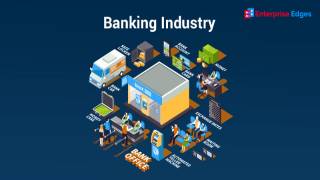Advertisement
The banking industry, a cornerstone of global economies, has undergone a remarkable transformation over the years. From its humble origins as simple money storage and lending institutions, banks have evolved into complex financial ecosystems that facilitate economic growth, innovation, and inclusivity. This article delves into the multifaceted evolution of the banking sector, highlighting key trends, technological advancements, regulatory changes, and the ever-changing role of banks in society.
Technological Innovation: A Paradigm Shift
In recent decades, technological advancements have driven a paradigm shift within the banking industry. The emergence of digital banking, powered by the internet and mobile technology, has revolutionized how customers interact with their financial institutions. Online banking platforms enable customers to conduct transactions, manage accounts, and access a wide array of financial services without the need to visit physical branches. Moreover, the rise of mobile banking applications has made banking even more convenient, allowing customers to handle their finances on-the-go.

Fintech Disruption and Collaboration
The advent of fintech (financial technology) companies has challenged traditional banking norms and reshaped the financial landscape. Fintech startups leverage cutting-edge technologies such as artificial intelligence, blockchain, and data analytics to offer innovative financial services. From peer-to-peer lending platforms to robo-advisors, these disruptors have carved out niches within the industry, attracting tech-savvy customers seeking alternative solutions.
Rather than viewing fintech as a threat, many traditional banks have recognized the potential for collaboration. Partnerships and acquisitions between banks and fintech startups have become common, allowing banks to tap into technological expertise and expand their service offerings. This collaboration-driven approach helps banks remain competitive while embracing the benefits of technological innovation.
The Rise of Digital Payments
Digital payments have transformed the way individuals and businesses transact. The shift from cash to electronic payments has led to greater efficiency, security, and transparency in financial transactions. Contactless payments, mobile wallets, and digital currencies like Bitcoin have gained traction, highlighting the industry's evolution toward a cashless society. Central banks of various countries are also exploring the concept of central bank digital currencies (CBDCs), which could further revolutionize the way money is managed and circulated.

Enhanced Customer Experience
The digital age has raised the bar for customer expectations. As a result, banks are focusing on delivering personalized and seamless experiences. Data-driven insights enable banks to better understand their customers' needs and preferences, allowing for tailored product recommendations and targeted marketing efforts. Chatbots and virtual assistants powered by AI provide 24/7 customer support, enhancing accessibility and responsiveness.
Regulatory Landscape and Security
In the wake of the 2008 financial crisis, regulatory bodies have placed a stronger emphasis on ensuring the stability and integrity of the banking sector. Stricter regulations and compliance requirements have been implemented to prevent systemic risks and protect consumer interests. The adoption of technologies like blockchain has also improved transparency and security in areas such as identity verification and transaction recording.
Financial Inclusion and Access
The digital transformation of banking has contributed to improved financial inclusion, bridging the gap between individuals with limited access to traditional banking services and the broader financial ecosystem. Online and mobile banking have made it possible for individuals in remote or underserved areas to access banking services, such as microloans and savings accounts. This inclusivity has the potential to uplift economies and empower marginalized communities.

The banking industry's journey from its inception to the modern era is a testament to its adaptability and resilience. Technological innovation, fintech disruption, digital payments, enhanced customer experiences, regulatory changes, and a focus on financial inclusion have collectively shaped the industry's trajectory. As we look ahead, the banking industry is poised to continue evolving, driven by emerging technologies, changing customer behaviors, and the ongoing quest for economic progress and stability.
Advertisement
Advertisement
- Previous article
- Navigating the Complex Landscape of Personal Finance
- Next article
- Understanding Credit Life Insurance: A Comprehensive Overview.
Advertisement
OTHER NEWS

Unleashing the Power of Cash Back Cards: Exploring the Best Options
BY Little Grapes

The Apple Phenomenon: Unraveling the Success Behind High Mobile Phone Sales
BY Little Grapes

Incentives and Conveniences of Multi-Car Insurance Policies for Families With Multiple Vehicles.
BY Wendy

What Does a Real Estate Agent do?
BY Anna

Insurance for Adults,These Four Must be Bought!
BY Little Grapes

Navigating the Skies: A Guide to Unveiling the Magic of Travel Credit Cards!
BY Wendy
RECENT NEWS
-

Demystifying Bitcoin
-

Securing and Maintaining High Limit Credit Cards: A Comprehensive Guide!
-

The investment value of men’s watches
-

Guarding Against Credit Card Fraud: What to Do If Your Identity Is Compromised?
-

Strategies for Success in the Watch Industry
-

Understanding Survivorship Life Insurance: Planning for the Future Together!

 1
1 1
1